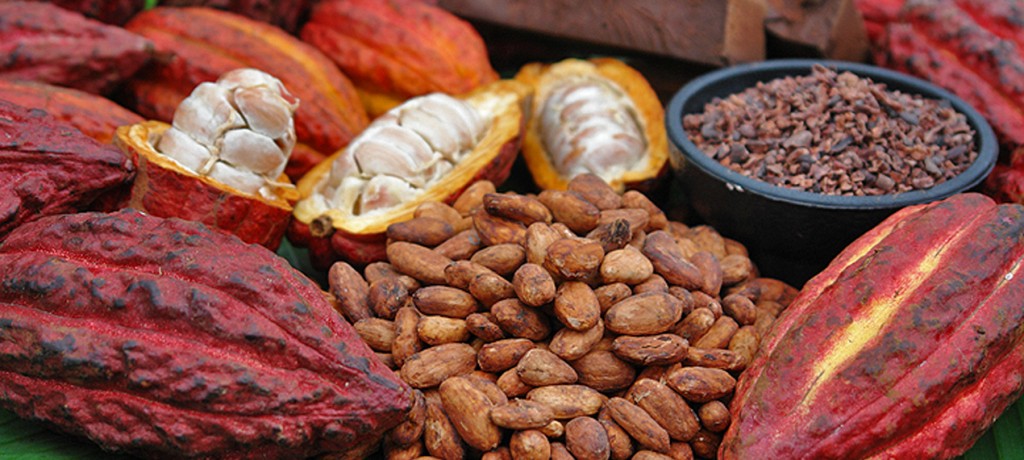The city of Ilhéus keeps an important historical collection of the country where cocoa, the plant that has lost its space due to agricultural pests, lack of maintenance and droughts, is back to being an instrument used by the population to retrieve the “chocolate tourism” motto and rewrite the work of Jorge Amado.
The population aims to “spark once again” the cultivation of the “fruit of the gods” across the region, working closely with the recovery of historic sites such as Rio do Braço, the very first district of Ilhéus, and the region’s former train station, through which cocoa was traded between 1920 and 1930. The site is currently in shambles and the 2016 drought affected the cocoa farmers who still had their plantations.
With the goal of recovering the site as historical and cultural heritage, the businessmen Lucas Kruschewsky is the leader of a project that wants to reclaim Rio do Braço and start chocolate tourism in Brazil.
“Rio de Braço is the very first district of Ilhéus, it is tremendously significant. It was a setting for soap operas, movies, the writer Jorge Amado depicts it throughout his work and, therefore, this is an endeavor to rescue it from a cultural and historical point of view,” the entrepreneur and activist said.
The first activity was to transform the ruins of the main shed, where cocoa used to be kept, into a traditional food restaurant, one that is capable of attracting those who live in the surroundings at first and, then, the tourists as well.
According to Kruschewsky, this is the only way to “engage” the population, prompting them to carry out a collective and voluntary recovery of this area and, as a consequence of such effort, inspire the young farmers to plant cocoa and produce what is designated as pure chocolate, the one that has the highest seed concentration.
“The best chocolate producers are the Europeans, but they have yet to plant a single cocoa tree. So, in addition to endow the cocoa culture with an international trait, the objective is to value what we have, our high quality and healthy chocolate”, he stressed.

The city is still exploring the trade of cocoa-derived products, among them we can find handicrafts, beauty and hygiene products, in addition to gastronomy itself, something that was reinforced with the multilingual translation of “Gabriela”, one of the most popular literary works of Jorge Amado (1912-2001).
“If it wasn’t for Jorge Amado, perhaps the history of our cocoa farms, chocolate tourism, and our natural beauties which were totally forgotten by the public authorities, would also be a route ignored by tourists,” the retired professor Ana Maria Oliveira said.
With the most extensive coastline in Bahia, known as the Cocoa Coast, this is one of the first municipalities in Brazil, having been established in 1536, and the marks of the Portuguese colonial era can still be seen in the architecture of the city centre, like the statue of the Greek poet Sappho, used as a motif in Portuguese vessels between 1924 and 1927.
The façades of the houses still keep the initials of the “cocoa barons”, the epithet of the ‘colonels’, and one of them has become the Jorge Amado Cultural House and Museum, where the city’s history is depicted by a collection of objects donated by the author’s family.
From the book pages to the brochures of tourist routes, Ilhéus goes through a transition period between the colonel-period from the 20s and 30s and the attempt to become a stopping point for Brazilian and Latin tourists, particularly after the establishment of the city’s airport. Chocolate tourism in Brazil is expected to draw not only interested visitors but also investors to the region.
Having this in mind, the vast majority of its resorts, such is the case of Cana Brava, were at first family houses which then turned into an engine that revved up an inexpensive form of tourism in the Northeast, targeting the families of brand new regions.
The manager of Cana Brava, Rafael do Espírito Santo, is part of a group of entrepreneurs who ‘sell’ the ‘chocolate tourism’ concept.
The city’s tourism is the historical consequence of several generations of cocoa farmers, who, entangled in the ecosystem of the Atlantic Forest, had to endure 20 years without exporting anything to Europe, passing on to their children and grandchildren this task of having to maintain and preserve the cocoa culture.